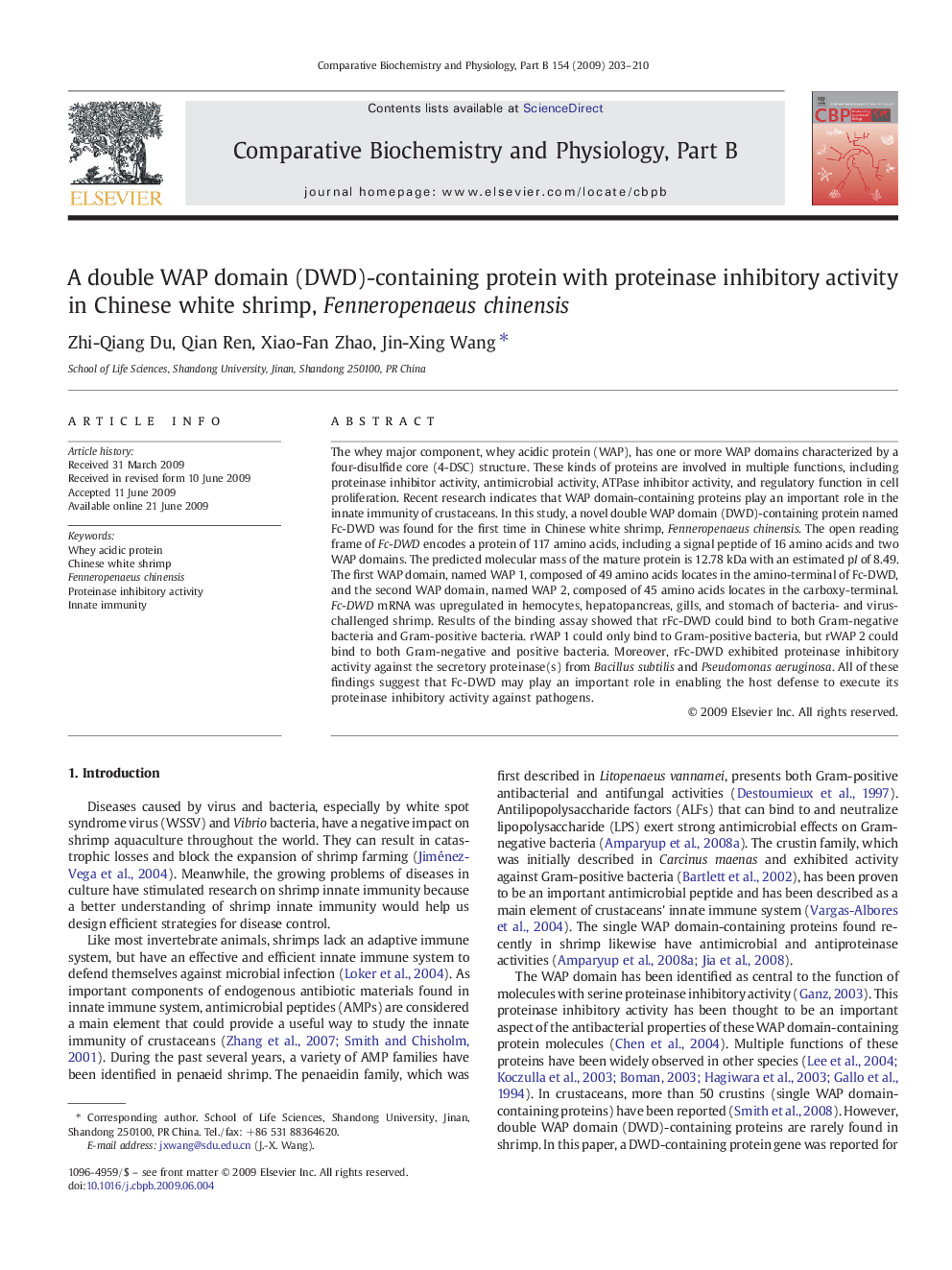| Article ID | Journal | Published Year | Pages | File Type |
|---|---|---|---|---|
| 1976013 | Comparative Biochemistry and Physiology Part B: Biochemistry and Molecular Biology | 2009 | 8 Pages |
The whey major component, whey acidic protein (WAP), has one or more WAP domains characterized by a four-disulfide core (4-DSC) structure. These kinds of proteins are involved in multiple functions, including proteinase inhibitor activity, antimicrobial activity, ATPase inhibitor activity, and regulatory function in cell proliferation. Recent research indicates that WAP domain-containing proteins play an important role in the innate immunity of crustaceans. In this study, a novel double WAP domain (DWD)-containing protein named Fc-DWD was found for the first time in Chinese white shrimp, Fenneropenaeus chinensis. The open reading frame of Fc-DWD encodes a protein of 117 amino acids, including a signal peptide of 16 amino acids and two WAP domains. The predicted molecular mass of the mature protein is 12.78 kDa with an estimated pI of 8.49. The first WAP domain, named WAP 1, composed of 49 amino acids locates in the amino-terminal of Fc-DWD, and the second WAP domain, named WAP 2, composed of 45 amino acids locates in the carboxy-terminal. Fc-DWD mRNA was upregulated in hemocytes, hepatopancreas, gills, and stomach of bacteria- and virus-challenged shrimp. Results of the binding assay showed that rFc-DWD could bind to both Gram-negative bacteria and Gram-positive bacteria. rWAP 1 could only bind to Gram-positive bacteria, but rWAP 2 could bind to both Gram-negative and positive bacteria. Moreover, rFc-DWD exhibited proteinase inhibitory activity against the secretory proteinase(s) from Bacillussubtilis and Pseudomonas aeruginosa. All of these findings suggest that Fc-DWD may play an important role in enabling the host defense to execute its proteinase inhibitory activity against pathogens.
